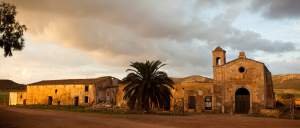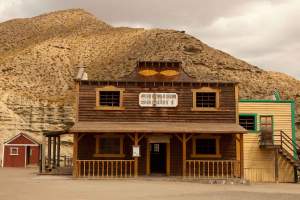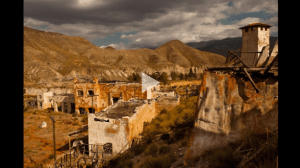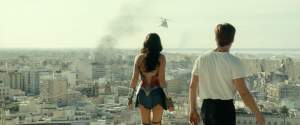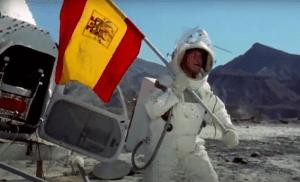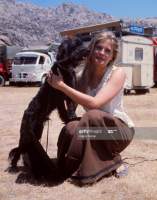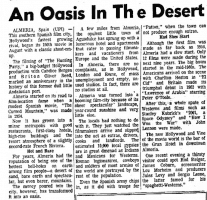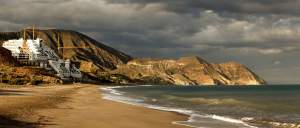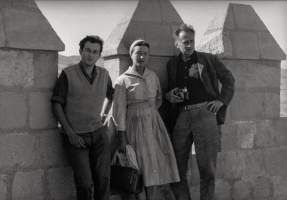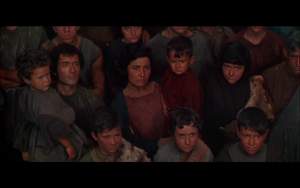Category: Once Upon a Time in Almería
125 Years of Federico García Lorca
Federico García Lorca was born in 1898, and earlier this year marked the 125th anniversary of his birth. When he was 30 years old, Spanish newspapers covered a sensational story from a remote corner of Andalucia. Twenty six year old bride Francisca Cañadas Morales was due to marry a local farmer. hours before the wedding she eloped with her cousin Francisco Montes Cañadas, with whom she had been in love since childhood. But before they could get away, the groom’s brother shot and killed Francisco. The episode became famous throughout the country as ‘el crimen de Níjar’ and served as […]
Read MoreAnthropology of the Moving Image
A new book looks at movie landscapes: Arnd Schneider, Professor of Social Anthropology at the University of Oslo has published widely on contemporary art and anthropology. His latest book, Expanded Visions: A New Anthropology of the Moving Image, brings together a set of essays on anthropology, ethnography and film. One of the essays, titled “An Anthropology of Abandon,” discusses experimental filmmaker and photographer Cyrill Lachauer’s “narrative landscapes” and travels through the American West. The essay opens with the desert, a tabula rasa on which the imagination can be projected. According to philosopher Jean Baudrillard, the desert is fascinating because of […]
Read MoreThe Story of El Condor 1
I put together this short video about one of my favorite film sets in Almería, which appears in “Once Upon a Time in Almeria: The Legacy of Hollywood in Spain” (Daylight Books 2017). One of the most intriguing locations in Almería is the site of an elaborate fortress originally constructed in 1969 for the film El Condor. Adobe houses, horse stables, an elevated water tank, and a luxurious two story stone house surrounded a central plaza the size of a soccer field. The entire complex was circled by 30 foot walls with a network of watchtowers and stairways. The fort […]
Read MoreWW84 in Spain
In Wonder Woman 1984, Diana Prince appears to be in semi-retirement, working at the Smithsonian Institution as an expert in ancient civilizations while playing mall cop in her spare time. But she is soon faced with a new challenge when an ancient Dreamstone shows up, granting wishes while creating havoc. This is where the real action starts. Diana and reanimated dead boyfriend Steve Trevor fly to Cairo, chasing after Max Lord, who has fled with the Dreamstone to fulfill his quest for limitless power. The Egypt segment was entirely filmed in Spain, in Almería, on the southern coast, and the […]
Read MoreEl Astronauta
This 1970 Spanish comedy follows Pepe (Tony LeBlanc), a small town dreamer who, after watching the US moon landing on television, decides to build his own rocket to the moon. Amazingly, after numerous setbacks, he finally blasts off into space before coming to a rough landing in a desolate lunar landscape. But while he believes he has reached the moon, his capsule has actually fallen back to earth, landing in the Tabernas desert in the south of Spain. Suddenly, an American cavalry rides by on horseback. The director yells ‘cut!’, while Pepe stands bewildered in his space suit in the […]
Read MoreCandice Bergen on Almería: “It was the most romantic location of my life.”
Candice Bergen was unfortunate enough to be kidnapped not once but twice along the southern coast of Spain in Almeria. It first happened in the 19th Century Old West (The Hunting Party, 1971). An outlaw (Oliver Reed) abducted her outside the schoolhouse, unaware she was the wife of a powerful cattle baron. Then, in 1904, while living in Morocco as an American expat, she was taken with her two children by the Mulai Ahmed er Raisuli (Sean Connery) and his band of Berber insurrectionists (The Wind and the Lion, 1975). She shows herself to be fearless, outsmarting and provoking her […]
Read MoreThe Summer of 1970: Almeria becomes a global movie hub
The summer of 1970 was a boom season for international movie productions in Spain. A long list of stars passed through Madrid and, of course, Almeria. Yul Brynner was here in June for Adios Sabata, then off to Yugoslavia for another production, before returning to Spain for The Light at the Edge of the World with Kirk Douglas. Omar Sharif and Jack Palance appeared in The Horsemen, Rod Steiger and James Coburn in Duck, You Sucker (Sergio Leone’s final Western), Robert Shaw and Martin Landau in A Town Called Hell, Oliver Reed and Candice Bergen in The Hunting Party, Faye […]
Read MoreThen and Now: The Attack on Aqaba
Compare the beach at Algarrobico on the southern coast of Spain then and now in the video clip above. The city of Aqaba was reconstructed here in 1962 for the filming of this classic scene from Lawrence of Arabia. Though nothing remains of the set today, just the hulk of an abandoned hotel project. I previously wrote about the history of this spot on this blog here.
Read MoreNelson Algren and Simone De Beauvoir’s Road Trip Through Franco’s Spain
Only a handful of photographs exist of Simone de Beauvoir and Nelson Algren together from a love affair that persisted, mostly across the Atlantic ocean, for over a decade. Possibly the last photograph of them together is from a visit to Spain in May 1960. In the photograph, they stand with Catalan writer Juan Goytisolo to their right along the wall of the Alcazaba, an old Moorish palace, in Almería. A glimpse of the mountainous landscape beyond can be seen over Goytisolo’s shoulder. Beauvoir, in the middle, looks intently into the camera with the air of a school teacher, while […]
Read MoreSpartacus: Between Spain and Hollywood
Spartacus was supposed to be filmed entirely in California. By 1960 there was growing alarm about the impact of “runaway” productions, which sought to cut costs by filming overseas, on Hollywood. Edward Muhl, longtime production director for Universal Studios, which was financing Spartacus, sought to demonstrate that an epic film could be made entirely in the US. Kirk Douglas, both producer and star, brought on a young Stanley Kubrick to direct (after firing Anthony Mann from the job). Kubrick, however, wanted to film in Europe. In the end, while the interiors and much of the first half of the film […]
Read More